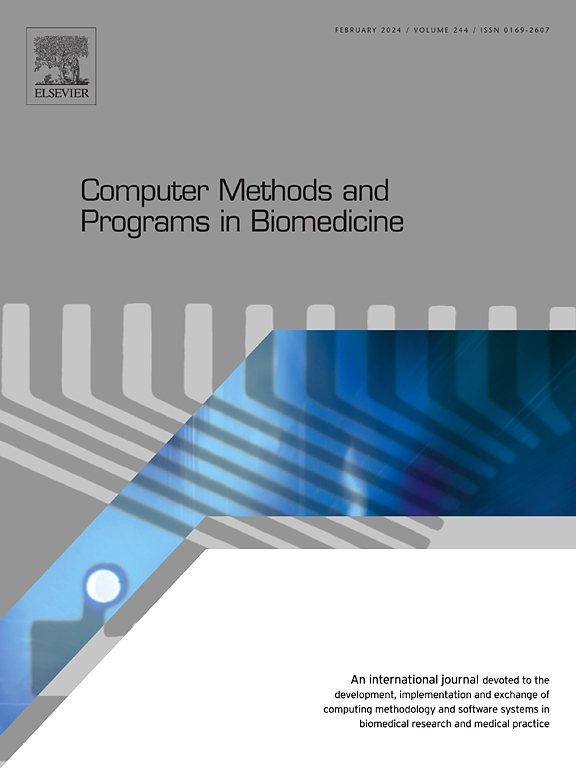A novel endoscopic posterior cervical decompression and interbody fusion technique: Feasibility and biomechanical analysis
IF 4.9
2区 医学
Q1 COMPUTER SCIENCE, INTERDISCIPLINARY APPLICATIONS
引用次数: 0
Abstract
Background and objective
Cervical decompression and fusion, the primary surgical techniques for treating degenerative cervical myelopathy, is traditionally performed using interbody fusion through an anterior approach. There are no reported cases of cage placement performed via a posterior cervical approach under endoscopy. This study investigates a novel posterior interbody fusion technique using a newly designed split cage and validates its feasibility through computer simulations.
Methods
Anatomical parameters of the posterior cervical safe area (PCSA) were analyzed, and a split interbody fusion cage was designed based on the anatomical parameters for endoscopic posterior cervical decompression and interbody fusion (Endo-PCDIF) surgery. Based on a validated intact C3-C7 cervical model, decompression-alone and Endo-PCDIF models were established via simulating operations, and comparisons were conducted among these models regarding the range of motions (ROMs), displacement, and stress distribution under the different motion conditions.
Results
PCSA is surrounded by the dural sac, nerve roots, vertebral artery, and pedicle. Ideal operating space for Endo-PCDIF was achieved by grinding the partial osseous structure. After performing decompression-alone, ROMs at the operational segment increased significantly compared to the pre-operation (80%, 12%, 34%, 24%, 25%, and 10%). Endo-PCDIF reduced ROMs at the operational segment by 49%, 32%, 46%, 42%, 52%, and 39% compared to the decompression-alone. The split cage exhibited minimal displacement and no abnormal stress distribution was observed.
Conclusions
PCSA is a crucial surgical pathway for operation at ventral area of dural sac during posterior cervical endoscopy. Endo-PCDIF effectively maintained stability at the operational segment and reduced the biomechanical influence result in adjacent segments.

求助全文
约1分钟内获得全文
求助全文
来源期刊

Computer methods and programs in biomedicine
工程技术-工程:生物医学
CiteScore
12.30
自引率
6.60%
发文量
601
审稿时长
135 days
期刊介绍:
To encourage the development of formal computing methods, and their application in biomedical research and medical practice, by illustration of fundamental principles in biomedical informatics research; to stimulate basic research into application software design; to report the state of research of biomedical information processing projects; to report new computer methodologies applied in biomedical areas; the eventual distribution of demonstrable software to avoid duplication of effort; to provide a forum for discussion and improvement of existing software; to optimize contact between national organizations and regional user groups by promoting an international exchange of information on formal methods, standards and software in biomedicine.
Computer Methods and Programs in Biomedicine covers computing methodology and software systems derived from computing science for implementation in all aspects of biomedical research and medical practice. It is designed to serve: biochemists; biologists; geneticists; immunologists; neuroscientists; pharmacologists; toxicologists; clinicians; epidemiologists; psychiatrists; psychologists; cardiologists; chemists; (radio)physicists; computer scientists; programmers and systems analysts; biomedical, clinical, electrical and other engineers; teachers of medical informatics and users of educational software.
 求助内容:
求助内容: 应助结果提醒方式:
应助结果提醒方式:


